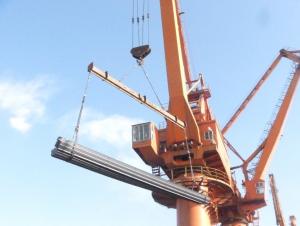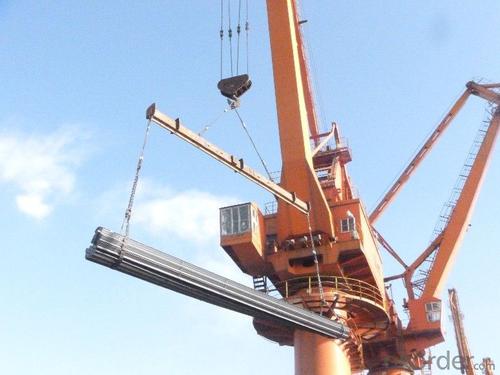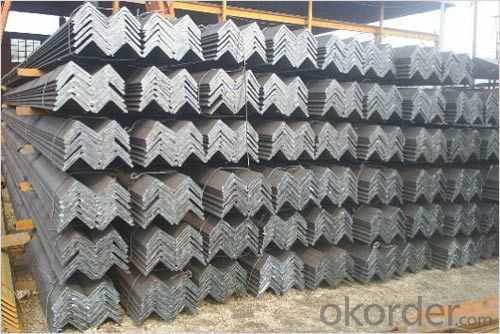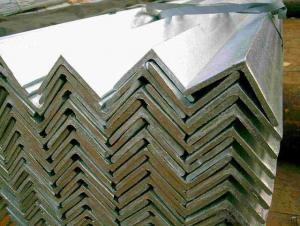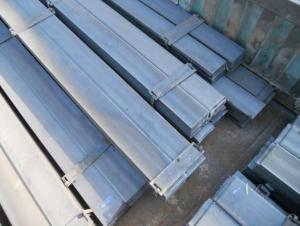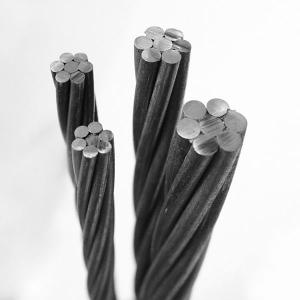GB Standard High Quality Angle Bar
- Loading Port:
- Tianjin
- Payment Terms:
- TT or LC
- Min Order Qty:
- 25 m.t.
- Supply Capability:
- 2000 m.t./month
OKorder Service Pledge
OKorder Financial Service
You Might Also Like
Product Description:
OKorder is offering Angle Steel great prices with worldwide shipping. Our supplier is a world-class manufacturer of steel, with our products utilized the world over. OKorder annually supplies products to European, North American and Asian markets. We provide quotations within 24 hours of receiving an inquiry and guarantee competitive prices.
Product Applications:
According to the needs of different structures, Angle can compose to different force support component, and also can be the connections between components. It is widely used in various building structures and engineering structures such as roof beams, bridges, transmission towers, hoisting machinery and transport machinery, ships, industrial furnaces, reaction tower, container frame and warehouse etc.
Product Advantages:
OKorder's Angle Steelare durable, strong, and resist corrosion.
Main Product Features:
· Premium quality
· Prompt delivery & seaworthy packing (30 days after receiving deposit)
· Corrosion resistance
· Can be recycled and reused
· Mill test certification
· Professional Service
· Competitive pricing
Product Specifications:
1. Invoicing on theoretical weight or actual weight as customer request
2. Length: 6m, 9m, 12m as following table
3. Sizes
Sizes: 25mm-250mm | ||
a*t | ||
25*2.5-4.0 | 70*6.0-9.0 | 130*9.0-15 |
30*2.5-6.6 | 75*6.0-9.0 | 140*10-14 |
36*3.0-5.0 | 80*5.0-10 | 150*10-20 |
38*2.3-6.0 | 90*7.0-10 | 160*10-16 |
40*3.0-5.0 | 100*6.0-12 | 175*12-15 |
45*4.0-6.0 | 110*8.0-10 | 180*12-18 |
50*4.0-6.0 | 120*6.0-15 | 200*14-25 |
60*4.0-8.0 | 125*8.0-14 | 250*25 |
Alloy No | Grade | Element (%) | |||||
C | Mn | S | P | Si | |||
|
|
|
|
|
|
| |
Q235 | B | 0.12—0.20 | 0.3—0.7 | ≤0.045 | ≤0.045 | ≤0.3 | |
|
|
|
|
|
|
| |
Alloy No | Grade | Yielding strength point( Mpa) | |||||
Thickness (mm) | |||||||
≤16 | >16--40 | >40--60 | >60--100 | ||||
≥ | |||||||
|
|
|
|
|
| ||
Q235 | B | 235 | 225 | 215 | 205 | ||
Alloy No | Grade | Tensile strength (Mpa) | Elongation after fracture (%) | ||||
Thickness (mm) | |||||||
| ≤16 | >16--40 | >40--60 | >60--100 | |||
≥ | |||||||
|
|
|
|
|
|
| |
Q235 | B | 375--500 | 26 | 25 | 24 | 23 | |
Quality Assurance of Alloy Steel for Bearing
We are the ISO 9001:2000 authentication enterprises and we can provide the enterprise's quality written guarantee for all the exported products.
Certificate of quality is issued in English, in addition the normal terms, production process, the mechanical property (yield strength, tensile strength, elongation and hardness. forged ratio, UT test result, Grain size, heat treatment methods and the sample of is shown on the certificate of quality.
FAQ:
Q1 How soon can we receive the product after purchase?
A1 Within three days of placing an order, we will begin production. The specific shipping date is dependent upon international and government factors, but is typically 7 to 10 workdays.
Q2: How do we guarantee the quality of our products?
A2: We have established an advanced quality management system which conducts strict quality tests at every step, from raw materials to the final product. At the same time, we provide extensive follow-up service assurances as required.
Q3: How soon can we receive the product after purchase?
A3: Within three days of placing an order, we will begin production. The specific shipping date is dependent upon international and government factors, but is typically 7 to 10 workdays.
Q4: What makes stainless steel stainless?
A4: Stainless steel must contain at least 10.5 % chromium. It is this element that reacts with the oxygen in the air to form a complex chrome-oxide surface layer that is invisible but strong enough to prevent further oxygen from "staining" (rusting) the surface. Higher levels of chromium and the addition of other alloying elements such as nickel and molybdenum enhance this surface layer and improve the corrosion resistance of the stainless material.
Images:
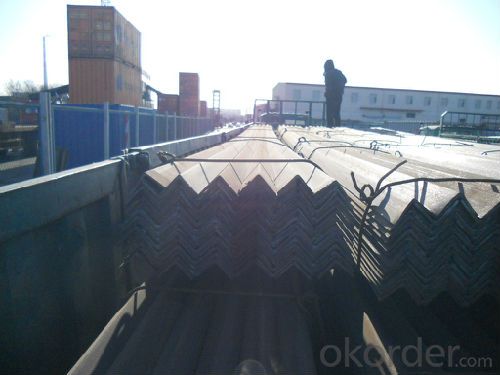

- Q:Can steel angles be used for underground or subterranean structures?
- Yes, steel angles can be used for underground or subterranean structures. Steel angles are versatile and commonly used in construction due to their strength, durability, and ability to withstand high levels of stress. In underground or subterranean structures, steel angles can be used for a variety of purposes such as providing structural support, reinforcing concrete walls or floors, or creating framing systems. They can also be used for retaining walls, tunnel linings, underground parking structures, or underground utility tunnels. The corrosion resistance of steel angles can be enhanced through various coatings or treatments, making them suitable for underground environments where moisture, soil, or other corrosive elements may be present. Overall, steel angles are a reliable and effective choice for underground or subterranean structures due to their strength, adaptability, and resistance to various environmental factors.
- Q:How are steel angles protected against atmospheric corrosion?
- There are various methods available to protect steel angles from atmospheric corrosion. One commonly used method is the application of a protective coating, such as paint, on the surface of the steel angles. This coating acts as a barrier, preventing direct contact between the steel and moisture or oxygen, which are the main causes of corrosion. Another method of protection is galvanization. Galvanization involves coating the steel angles with a layer of zinc, either through hot-dip galvanization or electroplating. The zinc acts as a sacrificial layer, corroding instead of the steel. This sacrificial corrosion process helps safeguard the steel angles from atmospheric corrosion. Apart from coatings, inhibitors can also be used to protect steel angles. Inhibitors are substances that can be added to the environment or applied directly to the steel surface to slow down or prevent corrosion. These inhibitors work by forming a protective film on the steel surface or by altering the chemical environment to reduce corrosion. Regular maintenance and inspection are crucial in protecting steel angles against atmospheric corrosion. This includes cleaning the surface of the steel angles to remove any dirt or debris that can trap moisture and speed up corrosion. It is also important to promptly repair any damaged or deteriorated coatings to ensure continuous protection against corrosion. In conclusion, a combination of protective coatings, galvanization, inhibitors, and regular maintenance is necessary to effectively shield steel angles from atmospheric corrosion and prolong their lifespan.
- Q:What material is angle iron?
- Angle called angle, the steel strip is perpendicular to each other on both sides into the corner. There are equal angles and unequal angles. The two sides of an equal angle steel are equal in width.
- Q:Can steel angles be used for storage rack systems?
- Yes, steel angles can be used for storage rack systems. Steel angles are commonly used in the construction of storage rack systems due to their strength and durability. They provide structural support and stability to the racks, allowing them to withstand heavy loads and provide a safe and efficient storage solution. Steel angles can be easily fabricated and installed, making them a popular choice for storage rack systems in various industries such as warehouses, manufacturing facilities, and retail stores. Additionally, steel angles can be customized to meet specific storage requirements, such as adjusting the height or width of the racks. Overall, steel angles are a reliable and cost-effective option for storage rack systems.
- Q:Can steel angles be used in telecommunications or broadcasting structures?
- Absolutely! Steel angles have a multitude of applications in the telecommunications and broadcasting industry. Their exceptional strength, durability, and versatility make them a staple in construction. From antenna mounts to equipment racks and cable trays, steel angles offer unparalleled structural support and stability. Moreover, their effortless fabrication and ability to be tailored to meet precise design specifications further solidify their suitability for a vast array of telecommunications and broadcasting needs.
- Q:Are steel angles suitable for vehicle ramps?
- Indeed, steel angles prove to be a fitting option for vehicle ramps. Renowned for their strength and durability, these steel angles are frequently employed in construction. Offering a robust and steadfast surface, they provide an appropriate selection for vehicle ramps. Furthermore, steel angles allow for effortless welding or bolting, enabling the creation of personalized ramp designs that cater to specific needs. In essence, steel angles present a dependable and pragmatic solution for the construction of vehicle ramps.
- Q:What are the different types of steel angles used in agriculture?
- There are several different types of steel angles used in agriculture, each with its own unique purpose and function. One common type is the standard angle, which is typically used for general construction and support applications. These angles have a 90-degree bend and are often used to reinforce structures such as barns, fences, and gates. Another type is the corner angle, which is specifically designed for creating corners or joints in agricultural structures. These angles have equal legs and are typically used to provide additional strength and stability at the corners of buildings, enclosures, or equipment. Slotted angles are also commonly used in agriculture. These angles have pre-drilled holes along their length, allowing for easy attachment of various components such as shelves, brackets, or hooks. They are often used in storage areas or workshops to create custom shelving or storage solutions. Additionally, there are specialized steel angles used for specific agricultural applications. For example, rack angles are used to support and secure storage racks for hay or other agricultural products. Purlin angles are used to support roof structures or provide additional strength to roof trusses in agricultural buildings. Overall, the different types of steel angles used in agriculture serve various purposes, including structural support, reinforcement, joint creation, and customized storage solutions. The specific type of angle used will depend on the specific requirements and needs of the agricultural project or structure.
- Q:Are steel angles suitable for outdoor furniture?
- Yes, steel angles are suitable for outdoor furniture. Steel is a durable and strong material that can withstand various weather conditions, making it an excellent choice for outdoor furniture. Steel angles provide stability and structural support, ensuring that the furniture can withstand heavy loads and remain sturdy. Additionally, steel is resistant to rust and corrosion when properly treated, which is essential for outdoor furniture exposed to moisture and changing weather. Steel angles also offer a sleek and modern aesthetic, allowing for versatile design options for outdoor furniture. Overall, steel angles are a reliable and long-lasting choice for outdoor furniture due to their durability, strength, and resistance to environmental elements.
- Q:Can steel angles be used in electrical installations?
- Yes, steel angles can be used in electrical installations. They are often used as structural supports or brackets for mounting electrical equipment such as junction boxes, conduit systems, or cable trays. Steel angles provide strength and stability to secure and organize electrical components effectively.
- Q:Can steel angles be used in automotive chassis construction?
- Yes, steel angles can be used in automotive chassis construction. Steel angles, also known as angle irons, are commonly used in the construction industry for their strength and versatility. In automotive chassis construction, steel angles can be used to provide structural support and reinforcement to the chassis frame. Steel angles are often used to create the frame structure of a vehicle's chassis, providing a stable and rigid framework. They can be used to form the main longitudinal and cross members, as well as other structural components. The use of steel angles in automotive chassis construction offers several advantages. Firstly, steel is a strong and durable material, making it suitable for withstanding the various stresses and loads experienced by the chassis. Steel angles can also be easily fabricated and welded, allowing for flexibility in design and customization. Moreover, steel angles are cost-effective compared to other materials such as aluminum or carbon fiber. This makes them a popular choice in automotive chassis construction, especially for mass-produced vehicles where cost efficiency is crucial. However, it is important to consider the specific requirements and regulations of the automotive industry when using steel angles in chassis construction. Chassis design must meet certain safety standards, including crashworthiness and structural integrity. Therefore, it is essential to ensure that the chosen steel angles and their dimensions are appropriate for the intended application and comply with relevant regulations. In conclusion, steel angles can indeed be used in automotive chassis construction. Their strength, versatility, cost-effectiveness, and ease of fabrication make them a suitable choice for creating the frame structure of a vehicle's chassis. However, it is important to consider safety regulations and ensure that the chosen steel angles meet the required standards.
1. Manufacturer Overview |
|
|---|---|
| Location | |
| Year Established | |
| Annual Output Value | |
| Main Markets | |
| Company Certifications | |
2. Manufacturer Certificates |
|
|---|---|
| a) Certification Name | |
| Range | |
| Reference | |
| Validity Period | |
3. Manufacturer Capability |
|
|---|---|
| a)Trade Capacity | |
| Nearest Port | |
| Export Percentage | |
| No.of Employees in Trade Department | |
| Language Spoken: | |
| b)Factory Information | |
| Factory Size: | |
| No. of Production Lines | |
| Contract Manufacturing | |
| Product Price Range | |
Send your message to us
GB Standard High Quality Angle Bar
- Loading Port:
- Tianjin
- Payment Terms:
- TT or LC
- Min Order Qty:
- 25 m.t.
- Supply Capability:
- 2000 m.t./month
OKorder Service Pledge
OKorder Financial Service
Similar products
New products
Hot products
Hot Searches
Related keywords
